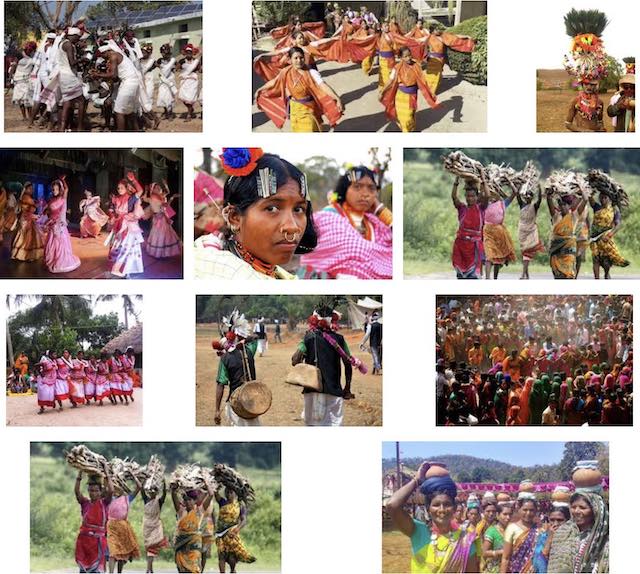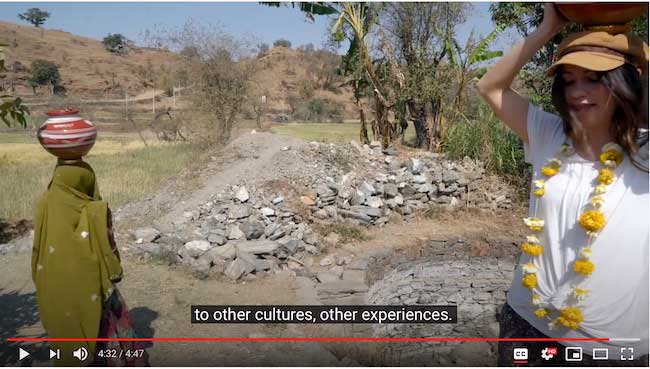The Supreme Court order [2012] to ban tourism in core tiger reserves, and decisions to shoot poachers at sight find favour with some conservationists, the middle class and media. But what will their impact be on the people who live in and around the tiger reserves, asks Tarsh Thekaekara
Tiger numbers are on the rise. Not so much in the wild, where they continue to be threatened, but in India’s English media. The mobile phone company Aircel has jumped onto the tiger bandwagon and runs ads on commercial TV channels encouraging people to save tigers and use Aircel. […]
Maharashtra, like Assam before it, in response to the spate of tiger deaths in its celebrated reserves has authorised forest guards to shoot tiger poachers. The gruesome images of butchered tigers leave very little sympathy for poachers. So, though shooting seems drastic, consistent reports of poaching on the rise leave wildlife enthusiasts convinced that only harsh measures will work.
Alongside this comes India’s Supreme Court interim ban, at the end of July 2012, on tourism in core area tiger reserves in response to a petition by a wildlife conservation group.The wider conservation fraternity and media are alive with debate. Some argue that good ‘eco-tourism’ initiatives provide important funding for tiger conservation and are hugely beneficial to forest-dwellers; others say there is no such thing as eco-tourism that benefits local communities and the crass commercial exploitation of tigers is harmful to them and their habitat.
So what are the issues that threaten tigers? And will this added public awareness about tigers and the urban consensus on tiger tourism and poaching have a significant impact on tiger conservation? There are no straightforward answers, of course, but the historical processes in conservation should play a more prominent role in these discussions. Tiger conservation in India, and forest management before that, has a chequered and turbulent history, the crux being the estimated 200-250 million people who live in and around India’s forests.
The Indian forest department was founded by the British government under a German officer in 1864, as the Imperial Forest Service. Its mandate was to oversee the ‘orderly exploitation’ of India’s forest wealth, primarily timber. All forests were taken over by the state. In 1947, the nascent independent Indian government made no effort to reverse this view of forests, as the state still needed such mechanisms to hold all the autonomous indigenous communities and kingdoms together as a country. People who had been living in forests for centuries, relatively unconnected to the outside world, were considered outlaws in the eyes of the state, unknown to them.
In response to the rampant poaching and decimation of wildlife, India launched its flagship conservation programme Project Tiger in the 1970s. India’s then Prime Minister Indira Gandhi constituted the first taskforce of specialists to create a blueprint for tiger conservation. Though it recognised the issue of people in parks, the 1972 report was primarily about better protection and policing of tiger reserves. It called for only the smaller ‘core’ zones of 300 sq km to be devoid of human habitation, within the larger (average 1,500 sq km) tiger reserves.
In 1983, another taskforce on ‘public support for wildlife conservation’ was constituted […]
By the end of the 1980s, protected area coverage had increased eight times from 1970, to about 4% of India’s land area. Tiger numbers rose significantly. H S Panwar, the then director of Project Tiger, wrote a self-congratulatory article titled ‘What to do when you have succeeded’. Project Tiger may have played a crucial role in preventing the charismatic cat from being pushed to extinction, but things got much worse for forest-dwellers as many of them were forcibly evicted from tiger reserves.
The success was shortlived. Around 2005, two well-known tiger reserves in central India — Sariska and Panna — were discovered, shockingly, to be devoid of tigers, despite official figures showing healthy tiger populations. Another high-profile tiger taskforce was constituted to examine how this had happened and to review India’s tiger conservation programme. It travelled across the country to understand the issues surrounding tiger conservation and what had gone wrong. Not surprisingly, the blame was placed largely on the government’s previous anti-people, guns-and-guards approach. They noted: “The protection of the tiger is inseparable from the protection of the forests it roams in. But the protection of these forests is itself inseparable from the fortunes of people who, in India, inhabit forest areas.”
The report found that forest-dwellers did not benefit in any way from tiger protection (or tourism), and were constantly being harassed under the guise of conservation. As a result, locals were happier assisting poachers and loggers in their activities than protecting tigers. The report called for a more democratic and inclusive approach. This led to a change in India’s conservation laws, with the ‘tiger’ amendment to the Wildlife Protection Act in 2006. While people could still be ‘voluntarily relocated’ out of ‘critical tiger habitats’ or core zones of tiger reserves, there had to be scientific evidence that the people’s activities had a detrimental effect on tigers. And communities had to be satisfied with the compensation they were being offered. More importantly, people living in the buffer zones of these tiger reserves had to be a part of and benefit from the conservation effort. Alongside this came the Indian Forest Rights Act that recognises the rights of indigenous people living in forests and attempts to correct “an historical injustice”, recognising forest people as “integral to the survival of the forest ecosystem”. The thrust of India’s current conservation laws, therefore, is about working with local people and pushing the ‘coexistence agenda’.
In this historical context, it is clear that the most under-represented area of tiger conservation (and all other conservation) in India is the issue of people living in forests. […]
Does tourism really benefit local communities? A recent survey by scientists Karanth and DeFries (2011) suggests that communities don’t get a fair share of the profits. Organisations like Equations, working on equitable tourism, as well as a host of other tourism studies all suggest the same — communities gain little or nothing from tourism, eco or otherwise. In response to this, the NTCA guidelines ask for 30% of tourism revenue to be shared with local communities, something the tourism industry is vehemently opposed to. Vishal Singh, the head of Tour Operators for Tigers, was quoted as saying: “Thirty per cent is too much for us. We cannot share more than 5% of it with the communities.” While there is little evidence that revenue generated from the private tourism industry is used for conservation except through the circuitous route of taxation, the government-run facilities do generate some revenues for the reserves. […]
But going by my experience of living and working around the Mudumalai Tiger Reserve in Tamil Nadu, it’s going to be a real challenge. There is a huge tourism industry in Mudumalai; almost all conservationists agree that it is excessive. The place gets over 1,000 visitors every day, most of them en route to Ooty. The majority come with no real interest in wildlife or nature, carrying their urban baggage with them (music, dancing, movies, alcohol and sex). They consider it extra fun doing all this in a ‘natural’ setting.
The tourism industry, like any other capitalist venture, is driven by short-sighted quarterly profits.Conservation and local communities always come second. Going by the news reports, the situation is much worse in central India.
A key reason this issue is so hyped up is that many of India’s celebrated tiger-defenders occupying key positions of power in Delhi also own various tourism facilities in our tiger reserves. The irony of throwing tribal people out and bringing urban tourists in is completely lost on them. […]
Conflict with the forest department is well known, since people living inside parks used to be considered encroachers and all basic livelihood activities illegal. Since the law no longer deems them illegal, the forest department now brands dissenting tribals ‘poachers’ or suspected poachers, and the dominance continues. The issue is primarily one of power — they have enjoyed their ruling position for over 100 years and are in no rush to hand over to locals.
Some argue that every society has its share of criminals, and a shoot-at-sight approach is the only way to deal with them. But as Dr Madhav Gadgil, one of India’s best-known ecologists points out, corruption and criminals within the forest department is a huge problem. People getting into the forest department at the junior-most level have to pay large bribes — amounts as high as a full year’s wages — to secure a coveted permanent government job. […]
In this context, will empowering officials to shoot anyone they consider a ‘poacher’ really help the situation? The scope for misuse is enormous. Anyone collecting firewood or honey could very easily be called a poacher and shot dead. The forest department has an extremely bad track record of dealing with people; the power to shoot at sight is going to make it considerably worse.
Taking a step back, I would argue that neither of these discussions is likely to make or break tigers. With the targeted branding and marketing of tigers over the last few years, the large cats have captured the hearts of the Indian urban middle class. Accordingly, tiger issues that middle class people are able to relate to have become central issues in tiger conservation. Habitat loss driven by overconsumption of natural resources by this very class of people is conveniently ignored. That tigers are not an end in themselves, but should be seen as a flagship for all forests and natural systems is also forgotten. And so there will continue to be more ‘tigerthons’ and more celebrity action. My hope is that the democratic processes of decision-making in India are not overly influenced by the media buzz, and that those involved in nature conservation are not impeded by the middle class. Tiger conservation issues directly affect thousands of people who live in and around the reserves. Both tourism and powers-to-shoot-poachers will have a considerable impact on these people, yet their voice is never heard.
(Tarsh Thekaekara works with The Shola Trust in the Nilgiris and is trained in biodiversity conservation from the University of Oxford)
Source: What does it take to save India’s tigers? | Info-change News & Features, August 2012
Address : https://www.infochangeindia.org/environment/features/what-does-it-take-to-save-india-s-tigers.html
Date Visited: Sun Oct 14 2012 12:14:24 GMT+0200 (CEST)
Related articles by Tarsh Thekaekara >>
Ullas Karanth makes a case for growing the Big Cat population exponentially
While the future is far from secure for the Indian tiger, it is far brighter than it has been in decades.” Drawing this conclusion in his new book, Among Tigers, one of the world’s best tiger biologists, K. Ullas Karanth, backs it up with facts. He argues that though densely populated by 1.3 billion people, India still has 3,80,000 square kilometres of potential tiger habitat. “If these forests can be nursed back to health by employing proven means already at our disposal, they can provide enough habitat for 15,000 or more wild tigers,” he writes. […]
Karanth brings out the joy of being in the forest and the perils of engaging with forest bureaucracy in equal measure while drawing up proposals for conserving wild cats. Balancing human emancipation and nature conservation is critical for making more room for tigers, he outlines.
‘Misguided compassion’
Distraction in achieving the goals of tiger conservation must be avoided, cautions Karanth, as everyone wants a piece of the tiger action by indulging in fuzzy thinking, misguided compassion, and inflated media hype. The history of tiger conservation is beset with such anomalies that this book seeks to amend, including the ‘Karanth tiger scandal’ that makes interesting reading. […]
Source: “Ullas Karanth makes a case for growing the Big Cat population exponentially”, Sudhirendar Sharma reviewing Among Tigers, The Hindu, 18 December 2022
URL: https://www.thehindu.com
Date Visited: 18 December 2022
[Bold typeface added above for emphasis]
Factchecker.in | Safe search examples with different keywords including
“factchecker.in tiger population“ | More >>
Up-to-date reports by Indian experts and journalists
Search tips
Combine the name of any particular state, language or region with that of any tribal (Adivasi) community.
Add keywords of special interest (music, poetry, dance just as health, sacred grove and biodiversity); learn about the rights of Scheduled Tribes such as the “Forest Rights Act” (FRA); and the United Nations “Declaration on the Rights of Indigenous Peoples”, “Universal Declaration of Human Rights”, “women’s rights”, or “children’s right to education”.
Specify any other issue or news item you want to learn more about (biodiversity, bonded labour and human trafficking, climate change, ecology, economic development, ethnobotany, ethnomedicine, global warming, hunter-gatherers in a particular region or state, prevention of rural poverty, water access).
For official figures include “scheduled tribe ST” along with a union state or region: e.g. “Chhattisgarh ST community”, “Himalayan tribe”, “Scheduled tribe Tamil Nadu census”, “ST Kerala census”, “Particularly Vulnerable Tribal Group Jharkhand”, “PVTG Rajasthan”, “Adivasi ST Kerala”, “Adibasi ST West Bengal” etc.
In case the Google Custom Search window is not displayed here try the following: (1) toggle between “Reader” and regular viewing; (2) in your browser’s Security settings select “Enable JavaScript” | More tips >>
Note: hyperlinks and quotes are meant for fact-checking and information purposes only | Disclaimer >>
List of websites covered by this Google custom search engine
Academia.edu (platform for academics to share research papers) – www.academia.edu
Archive.org – https://archive.org
Centre for Science and Environment – https://www.cseindia.org
Current Conservation – https://www.currentconservation.org
Development and Cooperation (D+C) https://www.dandc.eu
Down To Earth (India) – www.downtoearth.org.in
India Environment Portal – www.indiaenvironmentportal.org.in
Harnessing Nature Magazine – https://harnessingnature.online
Mongabay-India – https://india.mongabay.com
M S Swaminathan Research Foundation – www.mssrf.org
Navdanya (protecting India’s biodiversity based food heritage) – https://navdanya.org
Third World Network (Penang, Malaysia) – https://twn.my
The Shola Trust (nature conservation in the Nilgiri region) – www.thesholatrust.org

Indian online periodicals and platforms | Images view >>
~ ~ ~
Personalize your CustomSearch by combining other search words >>
(e.g. name of a tribal community and region, a craft, or dance and puppetry)
Research the above issues with the help of Shodhganga: A reservoir of theses from universities all over India, made available under Open Access >>
Note: hyperlinks and quotes are meant for fact-checking and information purposes only | Disclaimer >>
Find publications by reputed authors (add “open access” for freely downloadable content)
PDF-repository: texts quoted & further reference (Google Drive) >>

wildlife tourism and conservation policies >>
When your neighbour is a tiger | People’s Archive of Rural India
People living near or within the forest in the Bandipur National Park and the Sundarbans revere as well as fear the tiger. Their proximity to tigers, leopards, crocodiles and other big animals often causes violent confrontations, but it has also inspired myths and conservation. Here are PARI’s tales from tiger territory >>

Atlantic staff writer Annie Lowrey explains over-tourism and what we can do to fix it >>
More about Eco tourism | Tourism | Particularly vulnerable tribal groups >>